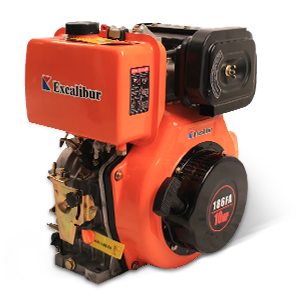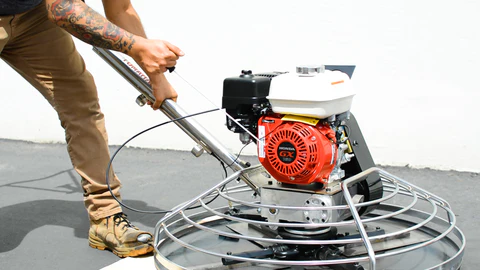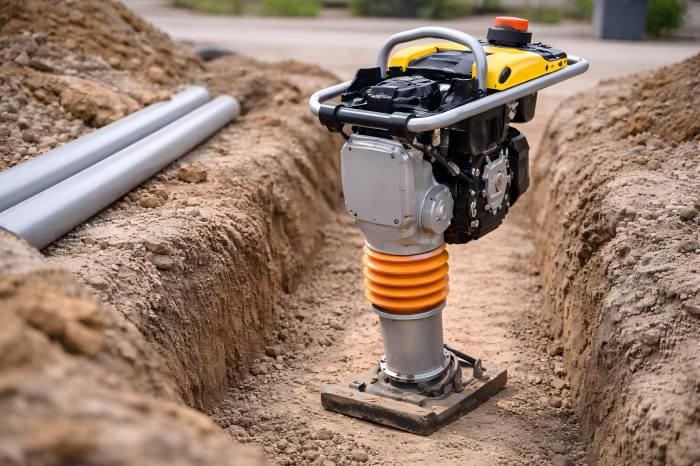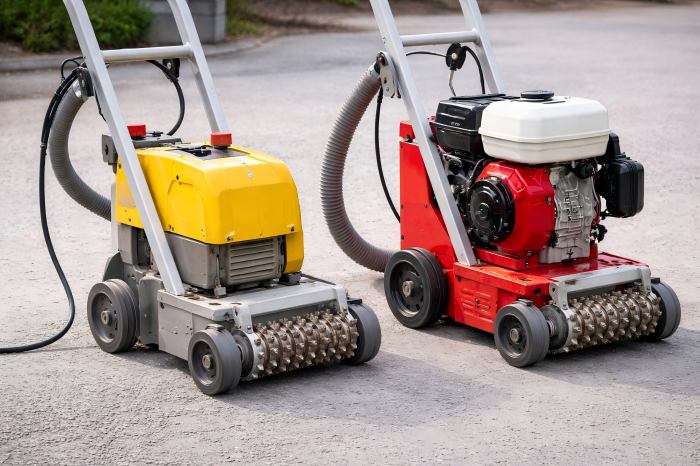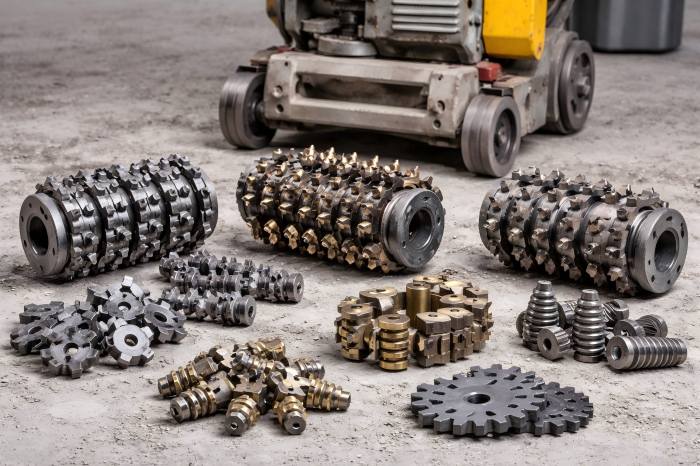Power trowels are vital for finishing concrete, helping operators create smooth, even surfaces quickly and efficiently. As a manufacturer of professional-grade power trowels, we’ve seen firsthand how proper operation can make or break a concrete pour. While this equipment offers tremendous benefits, using it incorrectly can lead to surface defects, machine damage, and safety risks.
Starting Too Early
The Mistake
One of the most frequent errors is using the power trowel before the concrete has reached the correct set. Operators may feel pressure to finish the slab quickly, especially under tight deadlines, but premature troweling can damage the surface.
The Consequences
- Gouging or tearing the concrete surface
- Embedding aggregate unintentionally
- Creating an uneven or porous finish
How to Avoid It
Wait until the concrete reaches the right level of firmness. A simple test is the “footprint test”—if your foot sinks more than ¼ inch, the slab is too soft. A properly set slab should support your weight with only a slight indentation.
Waiting Too Long to Start
The Mistake
Conversely, delaying the start for too long can also lead to issues. As concrete cures, it becomes more difficult to manipulate. Troweling late can lead to insufficient smoothing or a burnished finish that traps moisture.
The Consequences
- Surface crazing or cracking
- Difficulty achieving proper finish
- Wasted labor and fuel
How to Avoid It
Closely track concrete setting times, particularly during hot or windy weather conditions. Start floating as soon as the surface can support the machine without significant disruption, but while it’s still plastic enough to respond to troweling.
Incorrect Blade Angle and Pressure
The Mistake
Using an incorrect blade pitch (angle) is a frequent mistake, particularly for inexperienced operators. Blade angle must be adjusted based on the stage of the troweling process.
The Consequences
- Too flat: Blades won’t apply enough pressure, causing poor finishing.
- Too steep: Can burn the concrete or cause ridging.
How to Avoid It
Start with blades nearly flat during the floating phase. Gradually increase the angle during the finishing passes. Most walk-behind trowels have a pitch control for this exact reason—use it strategically.
Using the Wrong Blades
The Mistake
Many users fail to select the correct blades for their application. Power trowel blades come in different types, including combination blades, float pans, finish blades, and clip-on float blades.
The Consequences
- Inadequate finish quality
- Shortened blade life
- Damage to the concrete surface
How to Avoid It
Understand the difference:
- Float pans or combo blades: Suitable for early passes on freshly poured concrete.
- Finish blades: For the final smoothing stages.
- Clip-on blades: When switching between blade types is needed quickly.
Use the correct blade at each stage for optimal results.

Improper Machine Maintenance
The Mistake
Failing to maintain your power trowel leads to poor performance, unexpected breakdowns, and reduced service life.
The Consequences
- Blade imbalance
- Overheating
- Drive train or clutch failure
How to Avoid It
Carry out routine maintenance:
- Inspect the engine oil level and clean or replace air filters.
- Inspect belt tension and wear.
- Clean the machine after use.
- Grease moving parts as recommended.
Always follow the manufacturer’s recommended maintenance schedule to ensure optimal performance and extend equipment lifespan.
Troweling in Only One Direction
The Mistake
Going over the slab in a single direction or pattern may leave uneven spots or missed imperfections.
The Consequences
- Uneven surface texture
- Trowel marks and swirl lines
- Inconsistent hardness across the slab
How to Avoid It
Alternate your direction with each pass. Cross-troweling ensures full coverage and uniform finish. For large areas, plan a pattern that overlaps at least 25% of the previous path.
Ignoring Environmental Conditions
The Mistake
Neglecting to adjust for temperature, wind, humidity, or direct sunlight can drastically affect concrete setting time and machine performance.
The Consequences
- Rapid drying and cracking
- Uneven set across the slab
- Delayed or accelerated troweling window
How to Avoid It
Adapt your troweling schedule and strategy based on weather:
- Start earlier on hot days.
- Use curing compounds if needed.
- Protect slabs from direct sun or wind.
Check concrete every 15–30 minutes during the critical setting period.
Overworking the Surface
The Mistake
It’s tempting to make multiple passes in pursuit of the “perfect” finish. However, excessive troweling can over-densify or weaken the surface layer.
The Consequences
- Surface delamination
- Poor bonding for coatings or overlays
- Premature cracking
How to Avoid It
Limit troweling passes to what’s necessary for finish quality. If applying coatings or toppings later, consult with material suppliers to ensure surface prep compatibility.
Neglecting Safety Protocols
The Mistake
Some operators skip basic personal protective equipment (PPE) or overlook safe practices, especially when under pressure.
The Consequences
- Injury from moving blades
- Slips on wet concrete
- Long-term health issues from dust or fumes
How to Avoid It
Always wear:
- Gloves
- Eye and ear protection
- Slip-resistant boots
Maintain a clear, dry path for walking. Train all operators on safety procedures before use.
Using the Wrong Power Trowel for the Job
The Mistake
Choosing the wrong type or size of trowel for the surface area or project requirements can lead to inefficiency and poor results.
The Consequences
- Poor coverage on large jobs
- Difficult handling in tight spaces
- Increased labor time
How to Avoid It
Know your options:
- Walk-behind trowels: Ideal for medium to small jobs.
- Ride-on trowels: Best for large, open areas.
- Edging trowels: For work near walls or corners.
Match the machine to the scale and complexity of your job.
Bonus Tips for New Operators
- Practice on test slabs before tackling critical surfaces.
- Keep spare blades and tools on hand to avoid downtime.
- Document your settings for repeat jobs with similar specs.
- Use consistent blade pitch settings across similar concrete batches to standardize results.
Power trowels are powerful tools that, when used properly, can produce professional-grade concrete finishes efficiently. But without the right knowledge and care, common mistakes can ruin the slab, damage your equipment, or pose safety hazards.
As a power trowel manufacturer, we stress the importance of operator training, machine maintenance, and situational awareness. Avoid mistakes to ensure success and avoid costly concrete rework.
For optimal performance, always consult your equipment manual, follow best practices, and don’t hesitate to reach out to your trowel supplier for advice. With the right preparation and technique, your power trowel will deliver consistent, smooth finishes that stand the test of time.

